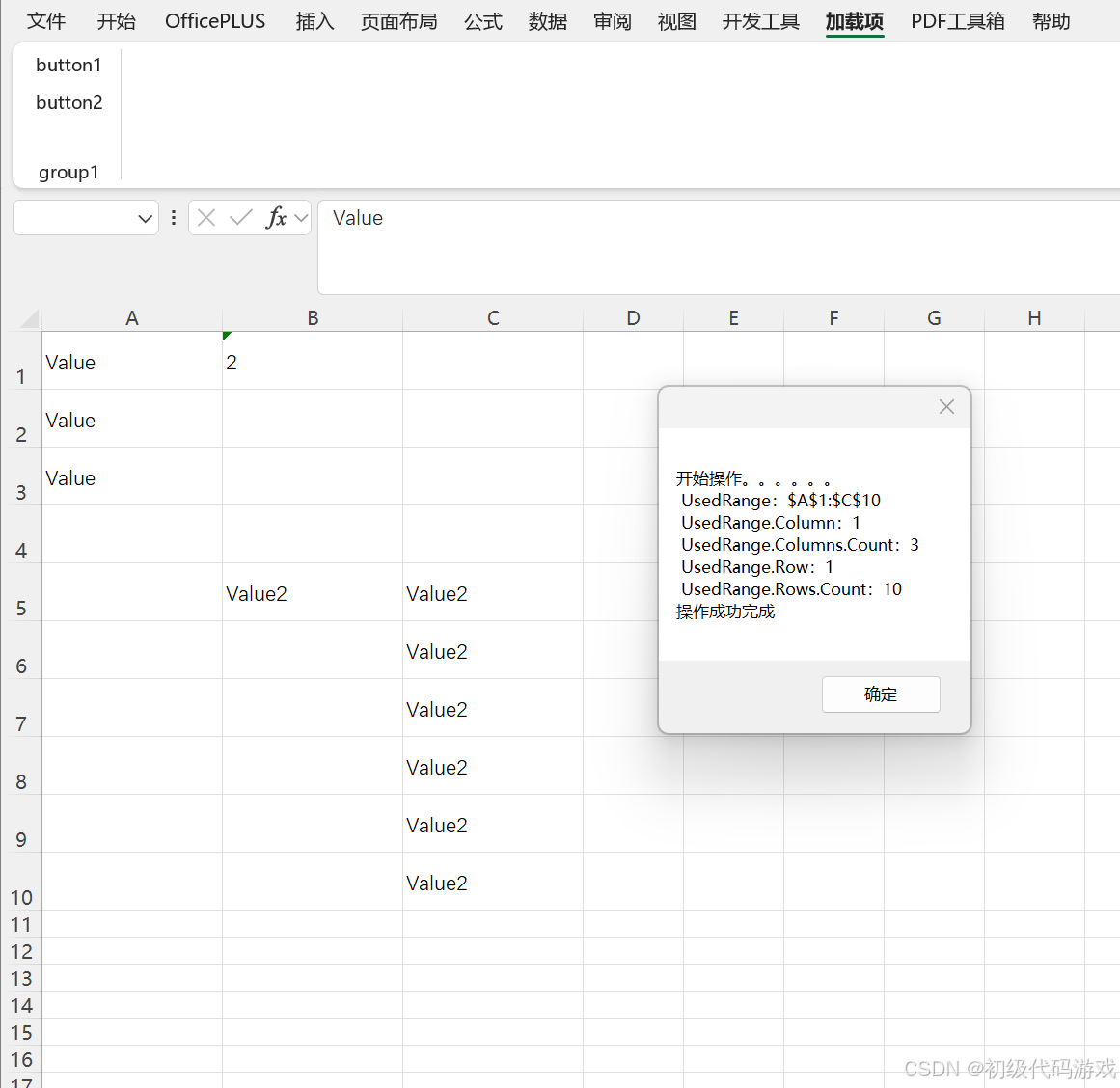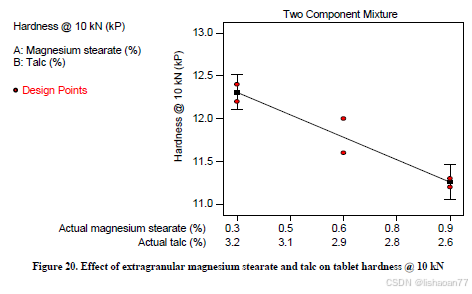跟着 Lua 5.1 官方参考文档学习 Lua (11)
文章目录
- 5.4.1 – Patterns
- Character Class:
- Pattern Item:
- Pattern:
- Captures:
- `string.find (s, pattern [, init [, plain]])`
- 例子:string.find 的简单使用
- `string.match (s, pattern [, init])`
- `string.gmatch (s, pattern)`
- `string.gsub (s, pattern, repl [, n])`
- 例子:计算包含的元音字母个数
- 例子 :'*'和'-'的区别
- 5.5 – Table Manipulation
- `table.concat (table [, sep [, i [, j]]])`
- `table.insert (table, [pos,] value)`
- `table.maxn (table)`
- `table.remove (table [, pos])`
- `table.sort (table [, comp])`
- 5.6 – Mathematical Functions
5.4.1 – Patterns
Character Class:
A character class is used to represent a set of characters. The following combinations are allowed in describing a character class:
-
x: (where x is not one of the magic characters
^$()%.[]*+-?) represents the character x itself. -
.: (a dot) represents all characters. -
%a: represents all letters. -
%c: represents all control characters. -
%d: represents all digits. -
%l: represents all lowercase letters. -
%p: represents all punctuation characters. -
%s: represents all space characters. -
%u: represents all uppercase letters. -
%w: represents all alphanumeric characters. -
%x: represents all hexadecimal digits. -
%z: represents the character with representation 0. -
%x: (where x is any non-alphanumeric character) represents the character x. This is the standard way to escape the magic characters. Any punctuation character (even the non magic) can be preceded by a ‘%’ when used to represent itself in a pattern. -
[set]: represents the class which is the union of all characters in set. A range of characters can be specified by separating the end characters of the range with a ‘-’. All classes %x described above can also be used as components in set. All other characters in set represent themselves.For example, [%w_] (or [_%w]) represents all alphanumeric characters plus the underscore,
[0-7] represents the octal digits, and [0-7%l%-] represents the octal digits plus the lowercase letters plus the ‘-’ character.
The interaction between ranges and classes is not defined. Therefore, patterns like
[%a-z]or[a-%%]have no meaning. -
[^set]: represents the complement of set, where set is interpreted as above.
For all classes represented by single letters (%a, %c, etc.), the corresponding uppercase letter represents the complement of the class. For instance, %S represents all non-space characters.
The definitions of letter, space, and other character groups depend on the current locale. In particular, the class [a-z] may not be equivalent to %l.
Pattern Item:
A pattern item can be
- a single character class, which matches any single character in the class;
- a single character class followed by ‘
*’, which matches 0 or more repetitions of characters in the class. These repetition items will always match the longest possible sequence; - a single character class followed by ‘
+’, which matches 1 or more repetitions of characters in the class. These repetition items will always match the longest possible sequence; - a single character class followed by ‘
-’, which also matches 0 or more repetitions of characters in the class. Unlike ‘*’, these repetition items will always match the shortest possible sequence; - a single character class followed by ‘
?’, which matches 0 or 1 occurrence of a character in the class; %n, for n between 1 and 9; such item matches a substring equal to the n-th captured string (see below);%bxy, where x and y are two distinct characters; such item matches strings that start with x, end with y, and where the x and y are balanced. This means that, if one reads the string from left to right, counting +1 for an x and -1 for a y, the ending y is the first y where the count reaches 0. For instance, the item%b()matches expressions with balanced parentheses.
Pattern:
A pattern is a sequence of pattern items.
A ‘^’ at the beginning of a pattern anchors the match at the beginning of the subject string.
A ‘$’ at the end of a pattern anchors the match at the end of the subject string.
At other positions, ‘^’ and ‘$’ have no special meaning and represent themselves.
Captures:
A pattern can contain sub-patterns enclosed in parentheses; they describe captures. When a match succeeds, the substrings of the subject string that match captures are stored (captured) for future use. Captures are numbered according to their left parentheses. For instance, in the pattern "(a*(.)%w(%s*))", the part of the string matching "a*(.)%w(%s*)" is stored as the first capture (and therefore has number 1); the character matching “.” is captured with number 2, and the part matching “%s*” has number 3.
As a special case, the empty capture () captures the current string position (a number). 【注意:() 的含义】For instance, if we apply the pattern "()aa()" on the string "flaaap", there will be two captures: 3 and 5.
A pattern cannot contain embedded zeros. Use %z instead.
string.find (s, pattern [, init [, plain]])
Looks for the first match of pattern in the string s. If it finds a match, then find returns the indices of s where this occurrence starts and ends; otherwise, it returns nil. A third, optional numerical argument init specifies where to start the search; its default value is 1 and can be negative. A value of true as a fourth, optional argument plain turns off the pattern matching facilities【plain参数为true,那么就是普通的字符串查找】, so the function does a plain “find substring” operation, with no characters in pattern being considered “magic”. Note that if plain is given, then init must be given as well.
If the pattern has captures, then in a successful match the captured values are also returned, after the two indices.
例子:string.find 的简单使用
s = "hello world"
i, j = string.find(s, "hello")
print(i, j) --> 1 5
print(string.sub(s, i, j)) --> hello
print(string.find(s, "world")) --> 7 11
i, j = string.find(s, "l")
print(i, j) --> 3 3
print(string.find(s, "lll")) --> nils = "Deadline is 30/05/1999, firm"
date = "%d%d/%d%d/%d%d%d%d"
print(string.sub(s, string.find(s, date))) --> 30/05/1999
补充内容:
The string.find function has an optional third parameter: an index that tells where in the subject string to start the search. This parameter is useful when we want to process all the indices where a given pattern appears: we search for a new match repeatedly, each time starting after the position where we found the previous one. As an example, the following code makes a table with the positions of all newlines in a string:
local t = {} -- table to store the indices
local i = 0
while true doi = string.find(s, "\n", i + 1) -- find next newlineif i == nil then break endt[#t + 1] = i
end
For instance, the test
if string.find(s, "^%d") then ...
checks whether the string s starts with a digit, and the test
if string.find(s, "^[+-]?%d+$") then ...
checks whether this string represents an integer number, without other leading
or trailing characters.
string.match (s, pattern [, init])
Looks for the first match of pattern in the string s. If it finds one, then match returns the captures from the pattern; otherwise it returns nil. If pattern specifies no captures, then the whole match is returned. A third, optional numerical argument init specifies where to start the search; its default value is 1 and can be negative.
注意比较 match 函数和 find 函数返回值的不同!
find 函数返回字符串中第一个匹配 pattern 的子字符串的位置和 pattern 中所有的 captures。
match 函数返回字符串中第一个匹配 pattern 的子字符串中所有的 captures。
find 函数比 match 函数多返回第一个匹配 pattern 的子字符串的位置。
补充内容:
We can use captures in the pattern itself. In a pattern, an item like ‘%d’, where d is a single digit, matches only a copy of the d-th capture. As a typical use, suppose you want to find, inside a string, a substring enclosed between single or double quotes. You could try a pattern such as ‘[“’].-[”’]’, that is, a quote followed by anything followed by another quote; but you would have problems with strings like “it’s all right”. To solve this problem, you can capture the first quote and use it to specify the second one:
s = [[then he said: "it’s all right"!]]
q, quotedPart = string.match(s, "([\"’])(.-)%1")
print(quotedPart) --> it’s all right
print(q)A similar example is the pattern that matches long strings in Lua:
%[(=*)%[(.-)%]%1%]It will match an opening square bracket followed by zero or more equal signs, followed by another opening square bracket, followed by anything (the string content), followed by a closing square bracket, followed by the same number of equal signs, followed by another closing square bracket:
p = "%[(=*)%[(.-)%]%1%]"
s = "a = [=[[[ something ]] ]==] ]=]; print(a)"
print(string.match(s, p)) --> = [[ something ]] ]==]
The first capture is the sequence of equal signs (only one in this example); the second is the string content
string.gmatch (s, pattern)
Returns an iterator function that, each time it is called, returns the next captures from pattern over string s. If pattern specifies no captures, then the whole match is produced in each call.
As an example, the following loop
s = "hello world from Lua"for w in string.gmatch(s, "%a+") doprint(w)end
will iterate over all the words from string s, printing one per line. The next example collects all pairs key=value from the given string into a table:
t = {}s = "from=world, to=Lua"for k, v in string.gmatch(s, "(%w+)=(%w+)") dot[k] = vend
For this function, a ‘^’ at the start of a pattern does not work as an anchor, as this would prevent the iteration.
string.gsub (s, pattern, repl [, n])
Returns a copy of s in which all (or the first n, if given) occurrences of the pattern have been replaced by a replacement string specified by repl, which can be a string, a table, or a function. gsub also returns, as its second value, the total number of matches that occurred.
If repl is a string, then its value is used for replacement. The character % works as an escape character: any sequence in repl of the form %n, with n between 1 and 9, stands for the value of the n-th captured substring (see below). The sequence %0 stands for the whole match. The sequence %% stands for a single %.
If repl is a table, then the table is queried for every match, using the first capture as the key; if the pattern specifies no captures, then the whole match is used as the key.
If repl is a function, then this function is called every time a match occurs, with all captured substrings passed as arguments, in order; if the pattern specifies no captures, then the whole match is passed as a sole argument.
If the value returned by the table query or by the function call is a string or a number, then it is used as the replacement string; otherwise, if it is false or nil, then there is no replacement (that is, the original match is kept in the string).
Here are some examples:
x = string.gsub("hello world", "(%w+)", "%1 %1")--> x="hello hello world world"x = string.gsub("hello world", "%w+", "%0 %0", 1)--> x="hello hello world"x = string.gsub("hello world from Lua", "(%w+)%s*(%w+)", "%2 %1")--> x="world hello Lua from"x = string.gsub("home = $HOME, user = $USER", "%$(%w+)", os.getenv)--> x="home = /home/roberto, user = roberto"x = string.gsub("4+5 = $return 4+5$", "%$(.-)%$", function (s)return loadstring(s)()end)--> x="4+5 = 9"local t = {name="lua", version="5.1"}x = string.gsub("$name-$version.tar.gz", "%$(%w+)", t)--> x="lua-5.1.tar.gz"
补充内容:
例子:计算包含的元音字母个数
nvow = select(2, string.gsub(text, "[AEIOUaeiou]", ""))
例子 :'*‘和’-'的区别
test = "int x; /* x */ int y; /* y */"
print(string.gsub(test, "/%*.*%*/", "<COMMENT>")) --> int x; <COMMENT> 1test = "int x; /* x */ int y; /* y */"
print(string.gsub(test, "/%*.-%*/", "<COMMENT>")) --> int x; <COMMENT> int y; <COMMENT> 2
补充内容:
Another item in a pattern is ‘%b’, which matches balanced strings. Such item is written as ‘%bxy’, where x and y are any two distinct characters; the x acts as an opening character and the y as the closing one. For instance, the pattern ‘%b()’ matches parts of the string that start with a ‘(’ and finish at the respective ‘)’:
s = "a (enclosed (in) parentheses) line"
print(string.gsub(s, "%b()", "")) --> a line
Typically, this pattern is used as ‘%b()’, ‘%b[]’, ‘%b{}’, or ‘%b<>’, but you can use any characters as delimiters.
5.5 – Table Manipulation
This library provides generic functions for table manipulation. It provides all its functions inside the table table.
Most functions in the table library assume that the table represents an array or a list. For these functions, when we talk about the “length” of a table we mean the result of the length operator.
table.concat (table [, sep [, i [, j]]])
Given an array where all elements are strings or numbers, returns table[i]..sep..table[i+1] ··· sep..table[j]. The default value for sep is the empty string, the default for i is 1, and the default for j is the length of the table. If i is greater than j, returns the empty string.
table.insert (table, [pos,] value)
Inserts element value at position pos in table, shifting up other elements to open space, if necessary. The default value for pos is n+1, where n is the length of the table (see §2.5.5), so that a call table.insert(t,x) inserts x at the end of table t.
table.maxn (table)
Returns the largest positive numerical index of the given table, or zero if the table has no positive numerical indices. (To do its job this function does a linear traversal of the whole table.)
table.remove (table [, pos])
Removes from table the element at position pos, shifting down other elements to close the space, if necessary. Returns the value of the removed element. The default value for pos is n, where n is the length of the table, so that a call table.remove(t) removes the last element of table t.
table.sort (table [, comp])
Sorts table elements in a given order, in-place, from table[1] to table[n], where n is the length of the table. If comp is given, then it must be a function that receives two table elements, and returns true when the first is less than the second (so that not comp(a[i+1],a[i]) will be true after the sort). If comp is not given, then the standard Lua operator < is used instead.
The sort algorithm is not stable; that is, elements considered equal by the given order may have their relative positions changed by the sort.
5.6 – Mathematical Functions
This library is an interface to the standard C math library. It provides all its functions inside the table math.
忽略
相关文章:
)
跟着 Lua 5.1 官方参考文档学习 Lua (11)
文章目录 5.4.1 – PatternsCharacter Class:Pattern Item:Pattern:Captures: string.find (s, pattern [, init [, plain]])例子:string.find 的简单使用 string.match (s, pattern [, init])string.gmatch (s, pattern)string.gsub (s, pattern, repl [, n])例子&…...

使用 MyBatis XML 和 QueryWrapper 实现动态查询
本文档介绍了如何在 MyBatis 中结合 XML 配置和 MyBatis-Plus 的 QueryWrapper 来实现动态查询。 1. XML 中定义基本查询 首先,在 MyBatis XML 文件中定义一个基本的 select 查询: <select id"selectCode" resultType"java.util.Ma…...

视频理解开山之作 “双流网络”
1 论文核心信息 1.1核心问题 任务:如何利用深度学习方法进行视频中的动作识别(Action Recognition)。挑战: 视频包含时空信息,既需要捕捉静态外观特征(Spatial Information),也需要…...

每日一题——搜索二维矩阵
搜索二维矩阵 一、题目背景二、题目描述示例 1:示例 2:约束条件: 三、解题思路分析1. **错误思路回顾**2. **Z字形查找算法**算法步骤: 3. **算法优势** 四、代码实现代码说明: 五、测试用例测试用例 1:测试…...

PPT 小黑第21套
对应大猫22 动作按钮 “转到首页” 编号从1开始显示,点设计 -幻灯片大小 -修改幻灯片编号起始值为0(那么第二张幻灯片页码为1)...

大模型day01自然语言+大模型+环境
[TOC]大模型day01 自然语言处理 汉字的词是连着的,所以需要一个汉语处理模块,把词语、成语自动加空格隔开。 知识图谱构建——>从大语言文本挖掘出来 自然语言处理:翻译、智能语音 自然语言处理:理解一句话意思,…...

VSTO(C#)Excel开发3:Range对象 处理列宽和行高
初级代码游戏的专栏介绍与文章目录-CSDN博客 我的github:codetoys,所有代码都将会位于ctfc库中。已经放入库中我会指出在库中的位置。 这些代码大部分以Linux为目标但部分代码是纯C的,可以在任何平台上使用。 源码指引:github源…...

【2025】Electron + React 架构筑基——从零到一的跨平台开发
引言 源代码仓库: Github仓库【electron_git】 你是否厌倦了在命令行中反复输入git status,却依然无法直观看到文件变化? 是否羡慕VS Code的丝滑Git集成,却苦恼于无法定制自己的专属工具? 本专栏将为你打开一扇新的…...

AWS 如何导入内部SSL 证书
SSL 证书的很重要的功能就是 HTTP- > HTTPS, 下面就说明一下怎么导入ssl 证书,然后绑定证书到ALB. 以下示例说明如何使用 AWS Management Console 导入证书。 从以下位置打开 ACM 控制台:https://console.aws.amazon.com/acm/home。如果您是首次使用 ACM,请查找 AWS Cer…...

清华北大推出的 DeepSeek 教程(附 PDF 下载链接)
清华和北大分别都有关于DeepSeek的分享文档,内容非常全面,从原理和具体的应用,大家可以认真看看。 北大 DeepSeek 系列 1:提示词工程和落地场景.pdf 北大 DeepSeek 系列 2:DeepSeek 与 AIGC 应用.pdf 清华 Deep…...

【空地协同技术教程:概念与技术手段解析】
空地协同技术教程:概念与技术手段解析 一、空地协同的概念与核心价值 定义 空地协同(Air-Ground Collaboration)是指通过无人机(UAV)与无人车(UGV)等异构平台的跨域协作,利用各自的…...

【2025小黑课堂】计算机二级WPS精选系列20G内容(可下载:真题+预测卷+软件+选择题)
2025年3月全国计算机等级考试即将于3月29日至31日举行。为了帮助广大考生高效备考,小编特意收集并整理了最新版(备考2025年3月)的小黑课堂计算机二级WPS 电脑题库软件,助力考生在考试中游刃有余,轻松通关! …...

蓝桥杯备赛:炮弹
题目解析 这道题目是一道模拟加调和级数,难的就是调和级数,模拟过程比较简单。 做法 这道题目的难点在于我们在玩这个跳的过程,可能出现来回跳的情况,那么为了解决这种情况,我们采取的方法是设定其的上限步数。那么…...

kotlin高级用法总结
Kotlin 是一门功能强大且灵活的编程语言,除了基础语法外,它还提供了许多高级特性,可以帮助你编写更简洁、高效和可维护的代码。以下是 Kotlin 的一些高级用法,涵盖了协程、扩展函数、属性委托、内联类、反射等内容。 协程&#x…...

transformers - AWQ
本文翻译整理自:https://huggingface.co/docs/transformers/main/en/quantization/awq 文章目录 一、引言二、加载 autoawq 量化的模型三、Fused modules支持的架构不受支持的架构 四、ExLlamaV2五、CPU 一、引言 Activation-aware Weight Quantization (AWQ) 激活…...

mysql下载与安装、关系数据库和表的创建
一、mysql下载: MySQL获取: 官网:www.mysql.com 也可以从Oracle官方进入:https://www.oracle.com/ 下载地址:https://downloads.mysql.com/archives/community/ 选择对应的版本和对应的操作系统ÿ…...

在华为设备上,VRRP与BFD结合使用可以快速检测链路故障并触发主备切换
在华为设备上,VRRP与BFD结合使用可以快速检测链路故障并触发主备切换。以下是VLAN接口下配置VRRP与BFD的步骤: 目录 1. 配置BFD会话 2. 配置VLAN接口 3. 配置VRRP 4. 验证配置 5. 保存配置 1. 配置BFD会话 在两台设备之间配置BFD会话,…...

RK3588开发笔记-fiq_debugger: cpu 0 not responding, reverting to cpu 3问题解决
目录 前言 一、FIQ Debugger介绍 二、rockchip平台配置方法 三、问题分析定位 IRQF_NOBALANCING 的含义 总结 前言 在进行 RK3588 开发的过程中,我们可能会遇到各种棘手的问题。其中,“fiq_debugger: cpu 0 not responding, reverting to cpu 3” 这个错误出现在RK3588的…...

新能源汽车充电综合解决方案:安科瑞电气助力绿色出行
安科瑞 华楠 18706163979 随着新能源汽车的迅猛发展,充电基础设施的建设成为了推动行业进步的关键。然而,充电技术滞后、运营效率低下、车桩比失衡等问题,依然困扰着广大车主和运营商。今天,我们要为大家介绍一款新能源汽车充电…...

大语言模型进化论:从达尔文到AI的启示与展望
文章大纲 引言大语言模型中的“进化论”思想体现遗传变异过度繁殖和生存斗争大模型“过度繁殖”与“生存竞争”机制解析**一、过度繁殖:技术迭代的指数级爆发****二、生存竞争:计算资源的达尔文战场****三、生存竞争胜出关键要素****四、行业竞争格局演化趋势**核心结论自然选…...

python打卡day49
知识点回顾: 通道注意力模块复习空间注意力模块CBAM的定义 作业:尝试对今天的模型检查参数数目,并用tensorboard查看训练过程 import torch import torch.nn as nn# 定义通道注意力 class ChannelAttention(nn.Module):def __init__(self,…...

srs linux
下载编译运行 git clone https:///ossrs/srs.git ./configure --h265on make 编译完成后即可启动SRS # 启动 ./objs/srs -c conf/srs.conf # 查看日志 tail -n 30 -f ./objs/srs.log 开放端口 默认RTMP接收推流端口是1935,SRS管理页面端口是8080,可…...

关于 WASM:1. WASM 基础原理
一、WASM 简介 1.1 WebAssembly 是什么? WebAssembly(WASM) 是一种能在现代浏览器中高效运行的二进制指令格式,它不是传统的编程语言,而是一种 低级字节码格式,可由高级语言(如 C、C、Rust&am…...

图表类系列各种样式PPT模版分享
图标图表系列PPT模版,柱状图PPT模版,线状图PPT模版,折线图PPT模版,饼状图PPT模版,雷达图PPT模版,树状图PPT模版 图表类系列各种样式PPT模版分享:图表系列PPT模板https://pan.quark.cn/s/20d40aa…...

基于matlab策略迭代和值迭代法的动态规划
经典的基于策略迭代和值迭代法的动态规划matlab代码,实现机器人的最优运输 Dynamic-Programming-master/Environment.pdf , 104724 Dynamic-Programming-master/README.md , 506 Dynamic-Programming-master/generalizedPolicyIteration.m , 1970 Dynamic-Programm…...

Java + Spring Boot + Mybatis 实现批量插入
在 Java 中使用 Spring Boot 和 MyBatis 实现批量插入可以通过以下步骤完成。这里提供两种常用方法:使用 MyBatis 的 <foreach> 标签和批处理模式(ExecutorType.BATCH)。 方法一:使用 XML 的 <foreach> 标签ÿ…...

R语言速释制剂QBD解决方案之三
本文是《Quality by Design for ANDAs: An Example for Immediate-Release Dosage Forms》第一个处方的R语言解决方案。 第一个处方研究评估原料药粒径分布、MCC/Lactose比例、崩解剂用量对制剂CQAs的影响。 第二处方研究用于理解颗粒外加硬脂酸镁和滑石粉对片剂质量和可生产…...

PostgreSQL——环境搭建
一、Linux # 安装 PostgreSQL 15 仓库 sudo dnf install -y https://download.postgresql.org/pub/repos/yum/reporpms/EL-$(rpm -E %{rhel})-x86_64/pgdg-redhat-repo-latest.noarch.rpm# 安装之前先确认是否已经存在PostgreSQL rpm -qa | grep postgres# 如果存在࿰…...

命令行关闭Windows防火墙
命令行关闭Windows防火墙 引言一、防火墙:被低估的"智能安检员"二、优先尝试!90%问题无需关闭防火墙方案1:程序白名单(解决软件误拦截)方案2:开放特定端口(解决网游/开发端口不通)三、命令行极速关闭方案方法一:PowerShell(推荐Win10/11)方法二:CMD命令…...

自定义线程池1.2
自定义线程池 1.2 1. 简介 上次我们实现了 1.1 版本,将线程池中的线程数量交给使用者决定,并且将线程的创建延迟到任务提交的时候,在本文中我们将对这个版本进行如下的优化: 在新建线程时交给线程一个任务。让线程在某种情况下…...
